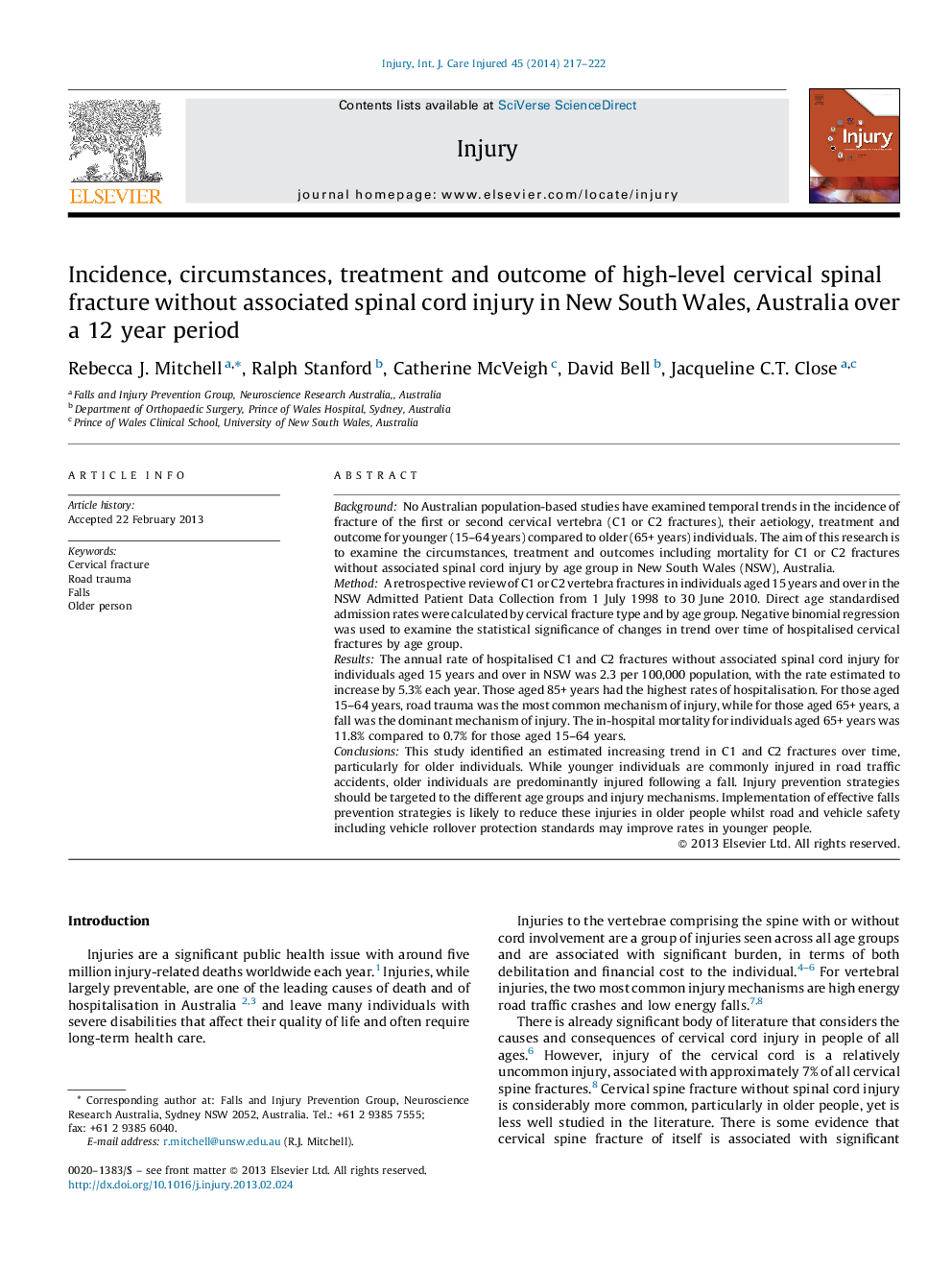| Article ID | Journal | Published Year | Pages | File Type |
|---|---|---|---|---|
| 3239825 | Injury | 2014 | 6 Pages |
BackgroundNo Australian population-based studies have examined temporal trends in the incidence of fracture of the first or second cervical vertebra (C1 or C2 fractures), their aetiology, treatment and outcome for younger (15–64 years) compared to older (65+ years) individuals. The aim of this research is to examine the circumstances, treatment and outcomes including mortality for C1 or C2 fractures without associated spinal cord injury by age group in New South Wales (NSW), Australia.MethodA retrospective review of C1 or C2 vertebra fractures in individuals aged 15 years and over in the NSW Admitted Patient Data Collection from 1 July 1998 to 30 June 2010. Direct age standardised admission rates were calculated by cervical fracture type and by age group. Negative binomial regression was used to examine the statistical significance of changes in trend over time of hospitalised cervical fractures by age group.ResultsThe annual rate of hospitalised C1 and C2 fractures without associated spinal cord injury for individuals aged 15 years and over in NSW was 2.3 per 100,000 population, with the rate estimated to increase by 5.3% each year. Those aged 85+ years had the highest rates of hospitalisation. For those aged 15–64 years, road trauma was the most common mechanism of injury, while for those aged 65+ years, a fall was the dominant mechanism of injury. The in-hospital mortality for individuals aged 65+ years was 11.8% compared to 0.7% for those aged 15–64 years.ConclusionsThis study identified an estimated increasing trend in C1 and C2 fractures over time, particularly for older individuals. While younger individuals are commonly injured in road traffic accidents, older individuals are predominantly injured following a fall. Injury prevention strategies should be targeted to the different age groups and injury mechanisms. Implementation of effective falls prevention strategies is likely to reduce these injuries in older people whilst road and vehicle safety including vehicle rollover protection standards may improve rates in younger people.
